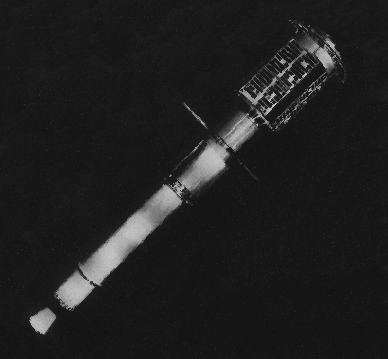SATCAT no. 107 Mission duration ~7 months | Harvard designation 1961 Nu 1 Website Explorer 11 at GSFC Manufacturer GSFC | |
 | ||
Explorer 11 (also known as S15) was an American Earth-orbital satellite that carried the first space-borne gamma-ray telescope. This was the earliest beginning of space gamma-ray astronomy. Launched on April 27, 1961 by a Juno II rocket the satellite returned data until November 17, when power supply problems ended the science mission. During the spacecraft's seven-month lifespan it detected twenty-two events from gamma-rays and approximately 22,000 events from cosmic radiation.
Instruments
The Explorer 11 telescope, developed at MIT under the direction of William L. Kraushaar, used a combination of a sandwich scintillator detector along with a Cherenkov counter to measure the arrival directions and energies of high-energy gamma rays. Since the telescope could not be aimed, the spacecraft was set in a slow spin to scan the celestial sphere. Due to a higher than planned orbit that carried the spacecraft into the detector-jamming radiation of the Van Allen belt, and an early failure of the on-board tape recorder, only 141 hours of useful observing time could be culled from about 7 months during which the instrument operated. During this time thirty-one "gamma-ray signature" events were recorded when the telescope was pointing in directions well away from the Earth's atmosphere, which is a relatively bright source of gamma rays produced in interactions of ordinary cosmic ray protons with air atoms. The celestial distribution of the thirty-one arrival directions showed no statistically significant correlation with the direction of any potential cosmic source. Lacking such a correlation, the identification of the cause of the thirty-one events as gamma rays of cosmic origin could not be established. The results of the experiment were therefore reported as upper limits that were significantly lower than the limits obtained from previous balloon-borne experiments.
An improved gamma-ray telescope, also developed at MIT under the direction of W. L. Kraushaar, was flown on the Third Solar Observatory (OSO-3), which was launched in 1967. It achieved the first definitive observation of high-energy cosmic gamma rays from both galactic and extragalactic sources. Later experiments, both in orbit and on the ground have identified numerous discrete sources of cosmic gamma rays in our Galaxy and beyond.
